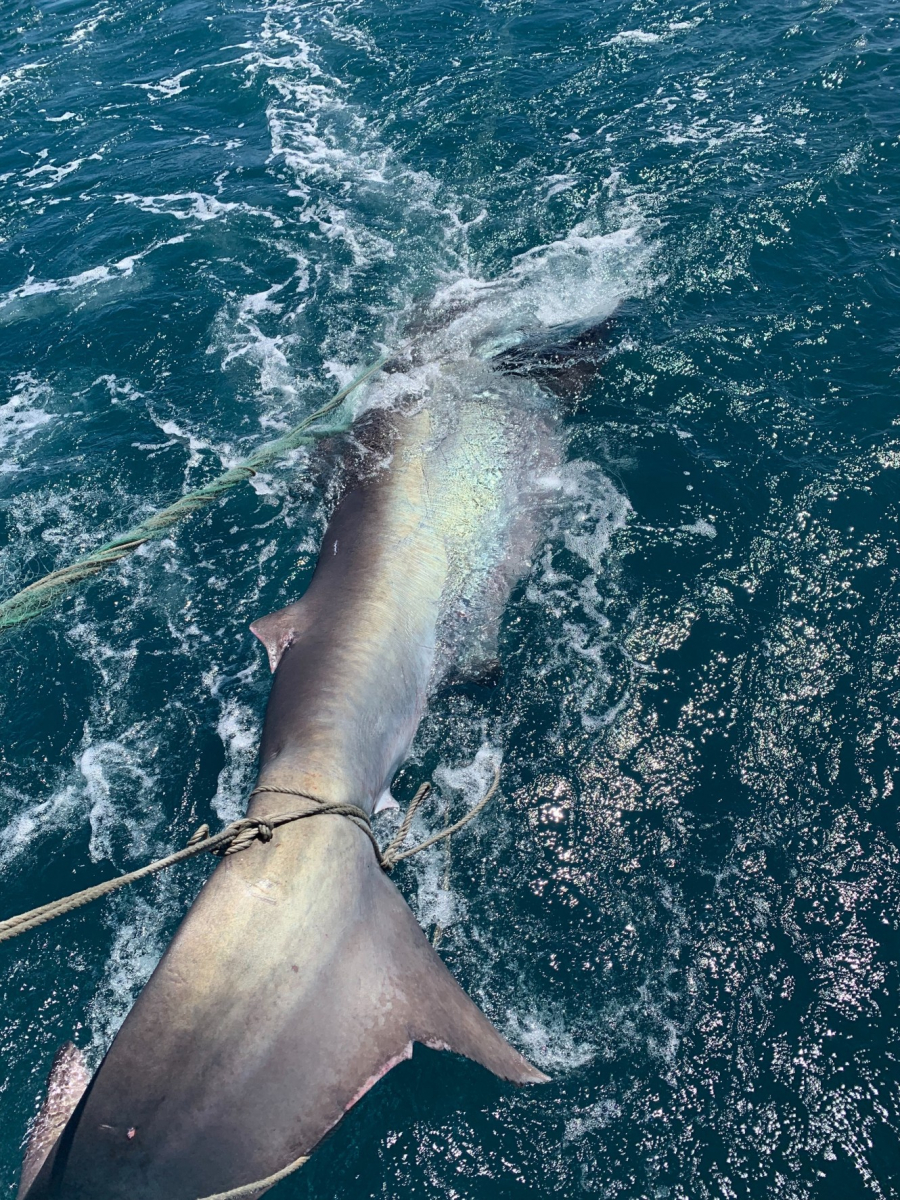EAST praises Hualien fishers for release of rare megamouth shark
A rare megamouth shark was released off the coast of Hualien yesterday after it was found caught in the net of Hualien-registered vessel. The shark was discovered at around 8 o'clock in the morning by crew on the fishing vessel Jin Horng No. 3., 2.77 nautical miles from the coastline. After an hour and a half long struggle the crew were able to free the shark and return it to its natural habitat at around 11:15am. The touching moment was captured on video by one of the crew on board the vessel.
See the moment a megamouth shark was released from a fishing net
Footage supplied by the Fisheries Agency
According to Taiwan's Fisheries Agency and the Taiwan Ocean Conservation and Fishery Sustainability Foundation (TOFF), fishers reported a four-meter-long megamouth shark had become entangled in gillnet at approximately 9:45am. The fishers reported the shark had become further entrapped in the net as it struggled to break free, hindering their efforts to free the creature.
Taiwanese authorities enacted a ban on megamouth shark catchings late last year. As a result, the fishers were reluctant to bring the shark on board, and in the meantime, expressed they did not want to discard the net out of concern for ocean ecology. The captain of the fishing vessel stated that the enigmatic creature had stopped moving and was possibly dead, however the captain and crew continued to take pains to free the animal.
The good news arrived at 11:15am. After managing to loosen the grip of the gillnet, the crew realized that the shark was still moving. They then fixed the tail of the shark to the side of the boat to prevent it from becoming further entangled before stepping up efforts to remove the net. Finally, the dedicated crew were able to free the shark and release the creature back to sea.

Image supplied by the Fisheries Agency
In light of the dramatic drop in global shark populations, EAST has campaigned for more stringent regulations to protect these slow-growing creatures, including protections for megamouth, great white, basking, and whale sharks. Last year, EAST partnered with fishers on a catch and release initiative to facilitate the tagging of megamouth sharks for scientific research, with support from the Carrefour Foundation.
After being informed of the news, Carrefour Foundation CEO Marilyn Su pledged to donate a NT $5,000 voucher to the captain of the vessel to reward their actions. Deputy Chief Executive Yu-Min Chen donated several cases of drinks to the fishers to celebrate the release, praising the crew for their conservation efforts.
"When the Fisheries Agency announced the ban on catching megamouth sharks last year, many netizens wondered if fishing operators would truthfully report catches, with some commentators claiming the ban would cut off access for scientific research" explained Ms. Chen.
"We are heartened to see that this has not been the case; fishers have moved with the rest of society to embrace the importance of ocean conservation and responsible fisheries. What's more, there has been no hinderance to researchers seeking to understand the megamouth's migration routes using tags."
In the Megathreat: Saving the Megamouth Shark report, EAST highlighted megamouth's ability to pump oxygenated water through their body by pumping their gills—an attribute known as buccal pumping. This unique ability increases the likelihood of megamouth sharks surviving fishing net entanglements, supplementing the movement of oxygenated water from forward motion.
Sharks have an evolutionary history spanning more than 400 million years. While sharks play a critical role in global marine ecosystems, typical reproduction patterns are characterized by late sexual maturity, long gestation periods, and low fecundity, making them particularly vulnerable to overfishing. A systematic analysis of chondrichthyan fishes led by IUCN Shark Specialist Group Co-Chair Professor Nicholas Dulvy found that sharks are in crisis, with chondrichthyan fishes facing greater extinction risk than all other major vertebrate lineages, with the exception of amphibians.
The megamouth shark is the third biggest known species of shark in the world and is very rarely seen by humans. Megamouths are known to inhabit the Pacific Ocean, and the Kuroshio Current to the east of Taiwan is a global hotspot. While exact population numbers are unknown, megamouth sharks likely have a small global population, making the species highly susceptible to external population pressures.
Taiwan's Fisheries Agency formally announced a ban on megamouth shark catchings on November 10, 2020 to ensure the future of this ocean treasure, following a campaign by EAST. The restrictions require all megamouth sharks caught in Taiwanese waters to be returned to the sea, regardless of whether or not they are alive when caught. Fishing operators must report any catchings to authorities within one day of returning to port.
More information: Mega-threat: new report issues stark warning for rare shark species
Press contact
Yu-Min Chen
Deputy Chief Executive of EAST
Mobile: +886 (9) 1015 0908
Phone: +886 (2) 2236 9735










